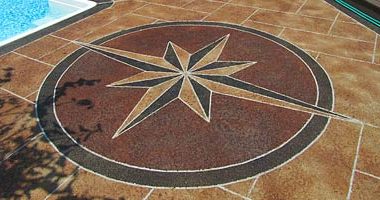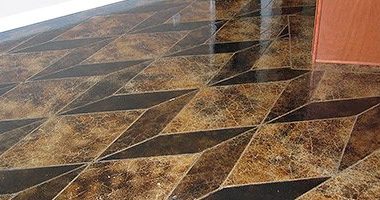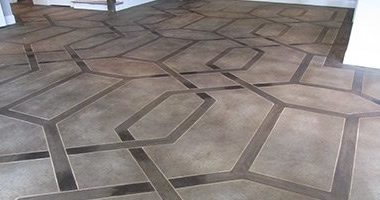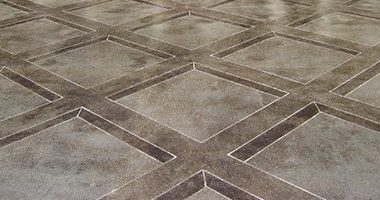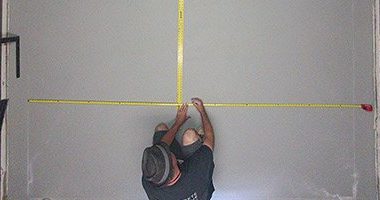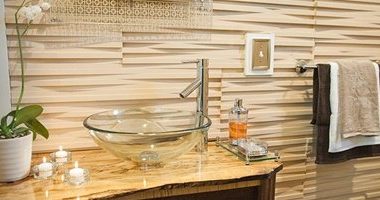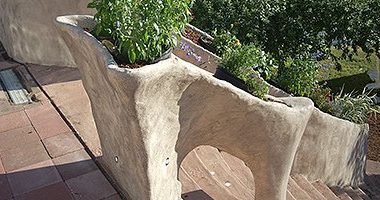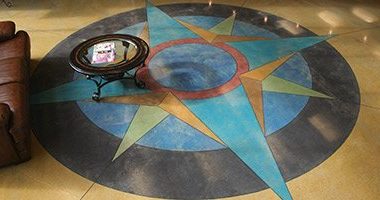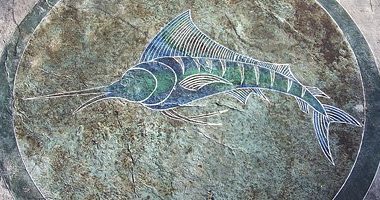Ever since I began writing Design Theory, I’ve anxiously awaited medallions. The first one I ever did was exciting and a definite “aha” moment because it changed the direction of my career. At the time, I had just started out working for the company I now own. Back then, all we engraved were 2-foot tile and brick patterns.
Tag: Design Theory
Scoring and Staining Concrete for Geometric Designs
The idea that you can take three connected “squares,” change the color for all three and make them appear to be two walls and a floor is pretty cool.
Stained Concrete Floor Ribbon Border How To
Borders can be used in many ways, not just to frame a room and make our engraving easier than cutting all the way to a wall. Usually 6-10 inches wide around the edge of a space, they can also be used as their own design element.
How To Add Dimension to a Stained Concrete Tile Pattern
In the previous two articles, I discussed my bread-and-butter designs. I probably do one of those designs every other week and sometimes twice a week. They’re quick and easy once you become familiar with them. Practice drawing them on your warehouse floor a couple of times until you get used to the routine.
How To Determine The Layout For An Individual Tile Pattern
I feel the industry has created a very busy design world. Many times I think people do too much design and they need to simplify things. Many interior designers want simple stain-and-seal floors because they want to focus on the furniture, lights and wall decor.
Concrete Artisan Reflects on Series Focused On Design Elements
The first thing designers should consider is the shape of the given work space and how to divide the space to create a striking and balanced composition.
A Striking Contrast Can Complement A Concrete Job
Beginning painters get so excited by the smorgasbord of shapes, colors and textures they have been learning that they often try to put every trick they know into each of their paintings. This leads to a hodge-podge with no focus.
How to Create Unity when Using Multiple Colors on Concrete
Standing alone, a color is amoral — entirely relative to what surrounds it. This extends not only to the colored border around your design, but also to the walls and ceilings in your peripheral vision when you glance at the floor.
Using a Color Wheel for Your Concrete Work
There is a famous paperback called “The Elements of Style” by Strunk and White. Many writers treasure it as a guide to writing clearly and succinctly while avoiding common grammatical errors. The handbook itself is a model of clarity.
Make Your Own Color Wheel
You will need a few basics to create your own color wheel – an artist’s acrylic paint in yellow, blue, red, black and white, several, 3/4 inch wide, flat bristle brushes, 2 14 x 14 inch poster boards, a compass, a pencil, paper plates, scap paper and glue.
